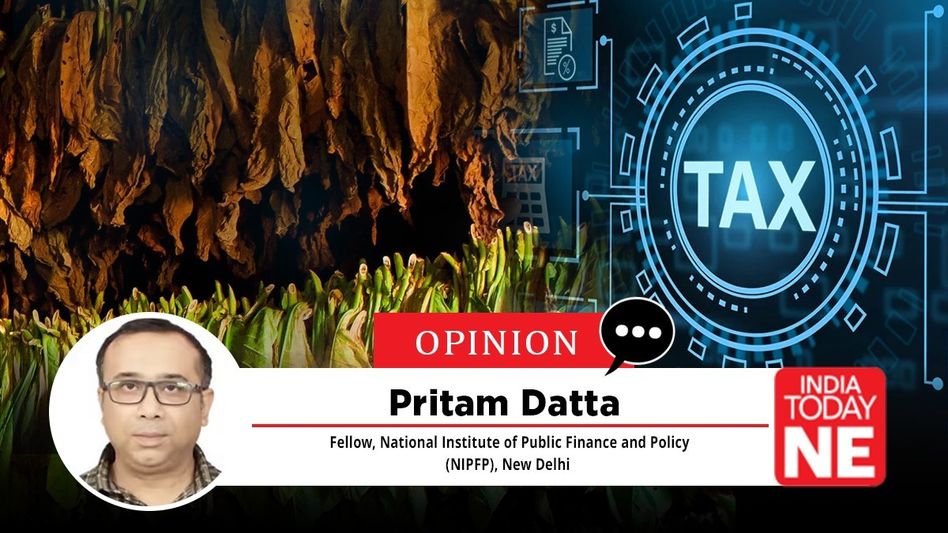From Tax Slabs to RSP-Based GST: Rethinking Tobacco Taxation in India
India plans to replace multiple tobacco tax slabs with a uniform GST based on retail price to simplify taxation and improve revenue. Experts believe this could also help regulate tobacco consumption while addressing public health concerns.

The 56th GST Council meeting introduced major tax reforms by revising the GST rate structure. The earlier four-slab system (5 per cent, 12 per cent, 18 per cent, 28 per cent) has now been streamlined into three tiers—5 per cent, 18 per cent, and 40 per cent—corresponding respectively to essential goods, standard commodities, and demerit or sin goods. From a tobacco-taxation perspective, three major reforms stand out. First, the GST rate on tendu leaves—an essential input for bidi manufacturing—has been reduced from 18 per cent to 5 per cent, while the rate on bidis has been lowered from 28 per cent to 18 per cent. Second, tobacco products except Bidi have been classified as demerit goods, with their GST rate raised from 28 per cent to 40 per cent. Third, for these sin products—including cigarettes—the GST will now be levied on the Retail Sale Price (RSP) instead of the transaction value.
Raising tobacco taxes is a globally proven strategy to reduce consumption and curb tobacco-related diseases and deaths, yielding substantial public-health gains. In this context, increasing the GST rate on tobacco products from 28% to a specially designated 40 per cent sin-goods slab is a welcome move. Beyond the higher tax burden, the formal classification of tobacco products as sin or de-merit goods underscores their harmful nature and reinforces the need to protect societal welfare. However, the reduction of GST on tendu leaves (from 18% to 5%) and on bidis (from 28 per cent to 18 per cent) represents a backward step in India’s two-decade-long efforts to curb tobacco consumption. Bidi is the most widely consumed form of smoked tobacco in the country, particularly among poorer populations. By lowering the tax burden on the bidi industry, the effectiveness of the broader GST reforms will be weakened, and the potential public-health gains diminished—especially for low-income smokers who currently consume bidis or may shift to cheaper cigarette alternatives.
However, the shift to levying GST on the Retail Sale Price (RSP) instead of the transaction value has received far less attention so far. In 2017, in India, GST replaced the earlier VAT regime with a destination-based tax system that is levied on value addition at each stage of the supply chain. Tax is charged on the transaction value at every point of supply, and the input tax credit (ITC) mechanism ensures that businesses can claim credit for taxes paid on inputs, preventing cascading and keeping the effective tax burden only on the value added. A key concern under GST is that producing states incur revenue losses because the tax is destination-based. This prompted the introduction of the GST Compensation Cess as a temporary transition mechanism to reimburse states for their revenue shortfall during the initial implementation period. The GST Compensation Cess, which is scheduled to be discontinued from January 2026, contributes substantially to the overall tax burden on tobacco products. Its withdrawal therefore, raises a serious concern about how this tax burden will be maintained once the cess ends.
Manufacturers may under-report transaction values, leading to significant revenue loss, and the widespread presence of unregistered tobacco vendors creates additional leakages. Shifting GST assessment to the RSP rather than the transaction value is therefore expected to substantially increase the tax burden on the tobacco and pan masala sector, except for bidi. India follows a length-based classification system for cigarette taxation, where tax rates are determined mainly by the physical length of the cigarette and whether it has a filter. There is a wide variation of retail price both across length-based tiers and among brands within the same tier. Such wide price variation across tiers and among brands within the same tier will complicate the implementation of an RSP-based GST system. Since brands within the same length category can have very different retail prices, the tax authorities would need to track and verify a much larger set of brand-specific RSPs. This increases administrative complexity, raises the risk of misreporting or manipulation of declared RSPs, and makes enforcement more challenging. In short, the lack of uniform pricing within tiers undermines the simplicity and predictability that an RSP-based GST system aims to achieve.
ALSO READ: Eight Years of GST: A defining moment to reform Tobacco Taxation through a Health Tax
A possible solution is to adopt a system based on a Recommended Retail Price (RRP). The Recommended Retail Price (RRP) declared by manufacturers is typically influenced by their estimated cost of production, along with margins for distribution, marketing, and profit. However, since these components are not independently verifiable, relying on manufacturer-declared RRPs for taxation can create room for strategic under-declaration. India could draw lessons from Bangladesh, which already applies a retail-price-based taxation system specifically for tobacco products. Bangladesh’s experience with a retail-price–based taxation system shows how the cigarette industry exploited differential pricing strategies. Manufacturers kept the prices of cheaper brands artificially low—often cross-subsidised by the higher profit margins earned from premium brands. This practice expanded the market for low-priced cigarettes, undermined public health goals, and led to substantial foregone tax revenue.
In the emerging GST 2.0 framework, three major concerns stand out for tobacco taxation in India. First, the impending discontinuation of the GST Compensation Cess in January 2026 raises uncertainty about how the government will maintain the overall tax burden on tobacco products, creating concerns about sustaining both revenue stability and public-health objectives in the post-cess period. Second, the reduction in the tax burden on bidis risks increasing their affordability, particularly among low-income users, potentially reversing years of progress in tobacco control. Third, the shift to an RSP-based GST for cigarettes may encourage the industry to adopt differentiated pricing strategies—keeping low-priced brands artificially cheap—thereby expanding the market for budget cigarettes, as observed in Bangladesh.
To address these emerging challenges under GST 2.0, several policy measures should be carefully considered before the new framework is rolled out for tobacco products in the country. First, with the GST Compensation Cess set to end in January 2026, the government should establish a dedicated Health Tax on tobacco products—outside the compensation framework—to maintain a high and stable tax burden. This can be complemented by indexing the tax to inflation and periodically revising rates to keep tobacco products unaffordable. Second, the tax reduction on bidis should be revisited, and a gradual increase in the effective tax burden—along with stricter enforcement on the largely informal bidi sector—should be introduced to prevent rising affordability.
While the first two challenges can be addressed with relatively straightforward policy measures, finding an effective remedy for the third challenge is far more complex. Establishing an RRP framework that can accommodate the wide price variations across and within different cigarette tiers—while also preventing strategic under-pricing by manufacturers—remains a critical policy hurdle. This complexity is further heightened by the unresolved question of whether the RRP should function as a maximum price, capping what retailers may charge, or as a minimum price, below which products cannot be sold. Each option carries different implications for compliance, enforcement, affordability, and the potential for price manipulation, making this one of the most difficult design choices in implementing an RSP-based GST system for tobacco products.
Copyright©2025 Living Media India Limited. For reprint rights: Syndications Today









